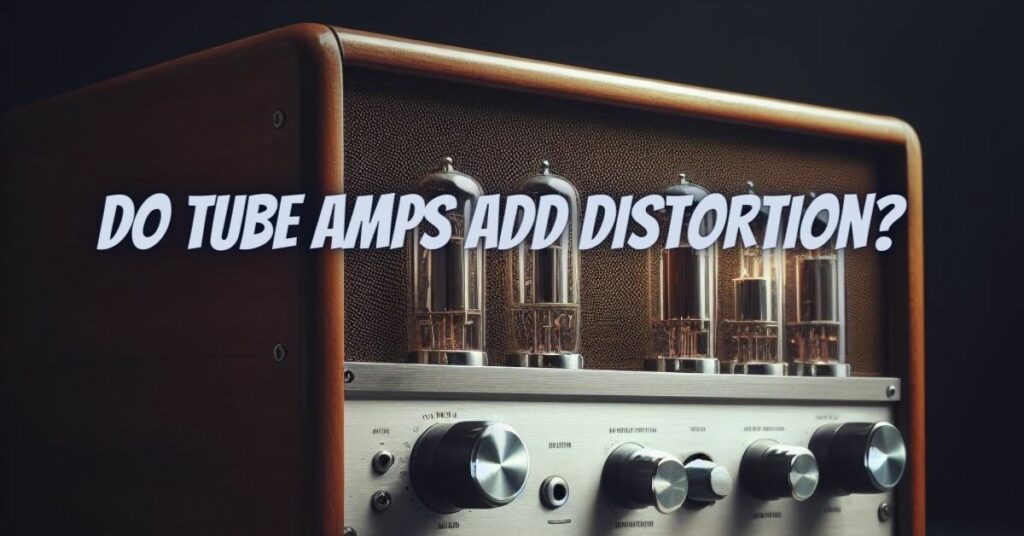Tube amplifiers, commonly known as “tube amps,” have long been synonymous with the world of vintage audio and music production. One of the central aspects that has contributed to their enduring appeal is the unique sonic character associated with them. At the heart of this character lies the concept of harmonic distortion. In this article, we will delve into the role of tube amplifiers in the realm of distortion and explore how they add a distinctive coloration to audio.
I. Understanding Tube Amplification
To understand how tube amplifiers add distortion, it’s essential to first comprehend how they work. Tube amplifiers use vacuum tubes (or electron tubes) to amplify audio signals. These tubes consist of key components, including a cathode, an anode (or plate), and a control grid. The flow of electrons between these components is modulated by the input signal, creating amplification.
II. Harmonic Distortion: The Essence of Tube Sound
One of the central elements of tube amplification is harmonic distortion. Harmonic distortion involves the generation of harmonics, which are additional frequencies that are integer multiples of the fundamental frequency. Harmonics can enrich the audio signal and add complexity to the sound, creating the warm and harmonically rich quality associated with tube amplifiers.
III. Even-Order Harmonics
Tube amplifiers primarily introduce even-order harmonic distortion. Even-order harmonics are harmonics that are integer multiples of the fundamental frequency (e.g., 2x, 4x, 6x, etc.). These harmonics are often described as sonically pleasing, adding warmth and color to the sound without introducing dissonance.
IV. Versatility of Tube Distortion
The extent and nature of distortion in tube amplifiers can be versatile and manipulated. Different types of tubes, such as EL34, 6L6, 6550, and KT88, have distinct tonal characteristics and distortion profiles. Musicians often experiment with tube types and biasing to shape their desired sound, ranging from clean and sparkly tones to overdriven and saturated distortion.
V. Subjective Perception
The impact of tube distortion on sound quality is highly subjective. Many audiophiles, musicians, and enthusiasts value the warm, vintage character that tube amplifiers provide. This subjective perception depends on individual preferences, listening environments, and musical contexts.
VI. Dynamics and Responsiveness
Tube amplifiers are known for their dynamic range and responsiveness. They handle volume changes gracefully, enhancing the listening experience for genres that require subtlety, nuance, and expressiveness, such as jazz and classical music.
VII. Resurgence of Tube Amplifiers
Despite the rise of solid-state and digital technologies, tube amplifiers have experienced a resurgence in popularity. Modern enthusiasts appreciate the vintage warmth and character they bring to audio systems. Moreover, advancements in manufacturing and design have made tube amplifiers more reliable and accessible.
VIII. The Quest for Sonic Perfection
The quest for perfect sound quality is a shared aspiration among audiophiles, musicians, and audio enthusiasts. However, the definition of perfection in sound is highly subjective. Ultimately, the most critical element in audio is the emotional connection between the listener and the music.
In conclusion, tube amplifiers do indeed add distortion to audio signals, particularly in the form of even-order harmonic distortion. This distortion is often celebrated for its warm, vintage character and musicality. The extent to which tube amplifiers impact sound quality is subjective, with individual preferences, musical genres, and listening contexts playing a crucial role. The enduring appeal of tube amplifiers lies in their ability to enhance the emotional connection between music and the listener, reminding us that the pursuit of perfect sound is ultimately a quest for the perfect listening experience.


